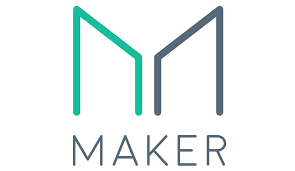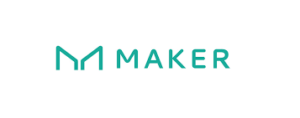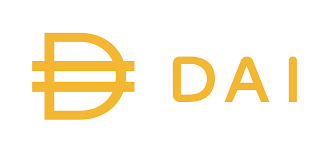Latest News
- Large Crypto Liquidation Occurs Amid WETH Price Drop
- Ethereum whales on MakerDAO face $238M liquidation risk as ETH nears critical level
- New Wallet Sells 3,433 ETH for 6.81 Million DAI
- JPMorgan sees yield-bearing stablecoins growing from 6% to 50% of market share
Current Price
The current price of DAI is $1.00006
Introduction
Welcome to our DAI stablecoin review.
Operated through the MakerDAO framework, its mechanism for achieving stability involves a complex interplay of over-collateralization and governance by MKR token holders.
While its foundational principles are designed to mitigate risks, the evolving DeFi landscape presents both opportunities and challenges.
As we explore the intricacies of Dai, it becomes essential to evaluate how these factors may influence its future trajectory and the broader implications for digital currencies.
So, let’s dive in!
Quick Overview
- Dai (DAI) is a decentralized stablecoin pegged to the US dollar, secured by a collateralized debt position mechanism on the Ethereum blockchain.
- The MakerDAO framework governs Dai, allowing MKR token holders to propose and vote on risk parameters for effective management.
- Dai’s value stability is maintained through over-collateralization, liquidation mechanisms, and a stability fee that incentivizes responsible collateral management.
- It is widely used in decentralized finance (DeFi) for lending, cross-border payments, and smart contracts, enhancing liquidity and reducing transaction costs.
- Regulatory scrutiny and market volatility present challenges for Dai, necessitating compliance and adaptation to maintain user trust and market position.
Overview of Dai (DAI)
Here’s a great overview video about DAI:
Dai (DAI) is a decentralized stablecoin that operates on the Ethereum blockchain, designed to maintain a stable value relative to the US dollar. Unlike traditional stablecoins that are often backed by fiat reserves, Dai utilizes a collateralized debt position (CDP) mechanism, allowing users to generate Dai by locking up cryptocurrency assets as collateral. This approach promotes decentralization and mitigates reliance on any centralized entity.
Dai’s unique structure is governed by the MakerDAO protocol, which implements a series of smart contracts to manage the issuance and stability of the stablecoin. The governance framework is maintained by MKR token holders who can vote on critical decisions, such as risk parameters and collateral types. This decentralized governance model guarantees transparency and adaptability in response to market dynamics.
As a stablecoin, Dai plays a pivotal role in the decentralized finance (DeFi) ecosystem, providing liquidity and facilitating transactions without the volatility commonly associated with cryptocurrencies. Its design prioritizes over-collateralization to maintain stability, making it an attractive option for users seeking a reliable digital asset for trading, lending, and other financial activities within the Ethereum network.
How Dai Maintains Its Peg
Dai maintains its peg to the US dollar through a collateral-backed stability mechanism, which involves locking up various cryptocurrencies as collateral to generate Dai.
This system is complemented by a robust governance framework that allows stakeholders to make decisions regarding risk management and protocol adjustments.
Together, these elements work to guarantee that Dai remains stable and responsive to market dynamics.

Collateral-backed Stability Mechanism
The collateral-backed stability mechanism is a critical component in maintaining the value peg of Dai, ensuring its stability in an inherently volatile cryptocurrency market. Dai operates by using over-collateralized assets to secure its value, which differentiates it from many other stablecoins that rely solely on fiat currency reserves.
Users can lock up various cryptocurrencies, such as Ethereum, in a smart contract to mint Dai. The collateralization ratio typically exceeds 150%, which provides a buffer against price fluctuations of the underlying assets.
When the market value of collateral falls below a predetermined threshold, the system triggers liquidation mechanisms to safeguard the peg. This involves selling the collateral to repay Dai holders and maintain the system’s solvency. The use of multiple collateral types also diversifies risk, allowing the system to withstand market volatility.
In addition, the stability fee, a variable interest rate charged on borrowed Dai, incentivizes users to repay their loans, thereby reducing the supply of Dai in circulation when its price is under pressure.
This robust architectural framework reinforces Dai’s peg to the US dollar, fostering trust among users and contributing to its overall resilience in the decentralized finance ecosystem.
Governance and Risk Management
Effective governance and risk management are essential to maintaining the stability of Dai and guaranteeing its peg to the US dollar. The MakerDAO governance framework plays a pivotal role in overseeing the Dai ecosystem. It employs a decentralized model where MKR token holders propose and vote on risk parameters, collateral types, and other critical aspects of the Dai stability mechanism.
This participatory approach allows for adaptive responses to market conditions, enhancing the resilience of the system.
Risk management is implemented through collateralization and ongoing monitoring of asset prices. The collateral-backed stability mechanism guarantees that each Dai is sufficiently backed by a basket of cryptocurrencies, which are subject to liquidation if their value falls below a specified threshold.
The system employs a stability fee to incentivize users to manage their collateral effectively, thereby mitigating risks associated with market volatility.
Furthermore, the introduction of the Dai Risk Dashboard provides real-time analytics, allowing stakeholders to assess potential risks and governance decisions. This transparency fosters a collective understanding of the ecosystem’s health, enabling proactive measures to maintain Dai’s peg.
Use Cases for Dai
How can Dai be leveraged in various financial contexts? As a stablecoin pegged to the U.S. dollar, Dai offers several use cases that address specific needs within the decentralized finance (DeFi) ecosystem.
One prominent application is in lending platforms, where users can collateralize Dai to access liquidity while maintaining exposure to their crypto assets. This enables traders to leverage their positions without liquidating their holdings.
Furthermore, Dai serves as an effective medium of exchange in decentralized marketplaces. Its stability makes it an attractive option for users seeking to conduct transactions without the volatility associated with other cryptocurrencies.
Additionally, Dai can facilitate cross-border payments, reducing friction and transaction costs compared to traditional financial systems.
Moreover, Dai’s programmability allows for integration within smart contracts, enabling automated processes in a variety of applications, such as yield farming and staking protocols.
This versatility enhances the functionality of DeFi projects, allowing users to earn interest or rewards on their holdings.

Potential Risks and Challenges
Dai’s inherent stability and decentralized framework, while advantageous, also expose it to several potential risks and challenges that users must consider. One significant risk is the volatility of collateral assets used in the Dai Stability Protocol. Since Dai is pegged to the US dollar, fluctuations in the value of collateral can lead to under-collateralization, prompting liquidation events that may adversely impact users.
Moreover, the decentralized nature of Dai introduces governance risks, as changes to the protocol require consensus from MKR holders. This can result in slow responses to urgent issues or misaligned incentives among stakeholders.
Additionally, the reliance on smart contracts poses security challenges; vulnerabilities in the code can lead to exploits or loss of funds, underscoring the importance of robust auditing processes.
Regulatory challenges also loom over Dai, particularly as global frameworks evolve to address decentralized finance (DeFi) products. Any potential restrictions or regulations could impact its accessibility and usage.
Future Outlook for Dai
The future outlook for Dai is shaped by a confluence of technological advancements, market dynamics, and regulatory developments.
As decentralized finance (DeFi) continues to gain traction, the demand for stablecoins like Dai is expected to rise, driven by their utility in providing stability in volatile markets. The integration of Dai into various DeFi protocols enhances its adoption, facilitating lending, borrowing, and yield farming opportunities.
Technologically, improvements in the Maker Protocol, including the introduction of multi-collateral Dai and enhanced governance mechanisms, position Dai favorably to adapt to market demands.
Enhancements in scalability and interoperability with other blockchain networks will further solidify its role within the broader crypto ecosystem.
Regulatory scrutiny remains a critical factor influencing Dai’s future. Compliance with evolving regulations could dictate its operational framework and affect user confidence.
However, proactive measures by the MakerDAO community to engage with regulators could mitigate potential risks and enhance legitimacy.
Frequently Asked Questions
How Can I Buy Dai (Dai) Tokens?
To purchase Dai tokens, utilize a cryptocurrency exchange that supports DAI. Create an account, complete identity verification, deposit funds, navigate to the DAI trading pair, and execute a buy order to acquire the tokens.
What Wallets Support Dai (Dai) Storage?
Several wallets support DAI token storage, including hardware options like Ledger and Trezor, as well as software wallets such as MetaMask, Trust Wallet, and Coinbase Wallet. Each offers varying levels of security and user experience.
Is Dai (Dai) Regulated by Any Authorities?
Dai operates within a decentralized finance framework, which currently lacks direct regulatory oversight by traditional authorities. However, regulatory scrutiny is increasing in the cryptocurrency sector, potentially impacting future governance and compliance standards for stablecoins like Dai.
Can Dai (Dai) Be Used for Offline Transactions?
Dai (DAI), a decentralized stablecoin, primarily operates on blockchain networks, limiting its use in offline transactions. However, it can be utilized indirectly through digital interfaces that facilitate conversions to fiat currencies for offline purchases.
What Are the Tax Implications of Using Dai (Dai)?
The tax implications of using digital currencies, such as Dai, can include capital gains taxation upon conversion to fiat, reporting requirements for transactions, and potential implications for income tax if received as payment. Consult a tax professional.
Wrapping Up
To summarize, DAI strives to be a robust decentralized stablecoin model, leveraging over-collateralization and a governance framework to maintain its peg to the US dollar.
Its integration within the DeFi ecosystem enhances its utility across various financial applications, fostering transparency and user engagement.
However, inherent risks such as market volatility and potential governance challenges necessitate ongoing scrutiny. The future outlook for Dai remains promising, contingent on continued innovation and adaptation within the evolving cryptocurrency landscape.

